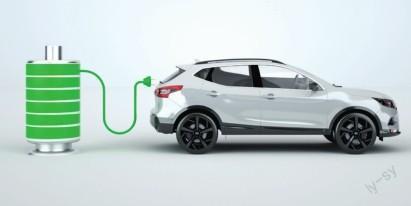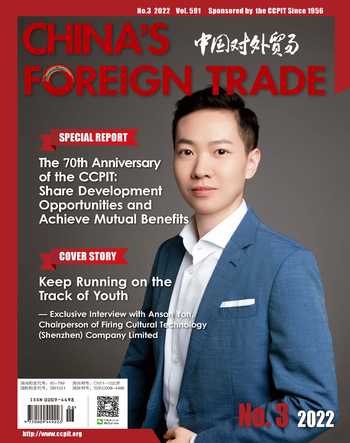New Energy Vehicle Market Accelerates the Combing-out of Unfit Players
By Jenny Hu

In April 2022, BYD officially announced the decision to stop the production of fuel vehicles, meaning it has completely moved away from the “fuel era”, and will focus on pure electric and plug-in hybrid electric vehicles in the future. In other words, BYD will concentrate its resources on strengthening the competitiveness in new energy vehicle(NEV) market.
The pandemic causes changes in industry landscape
Entering 2022, the COVID-19 pandemic broke out again in China, causing several provinces and municipalities, including Shanghai and Jilin Province, to be under full or partial regional lockdown. The outbreak has had a serious impact on both the supply and demand sides of Chinas automobile industry, resulting in a significant decline in domestic vehicle sales in April. According to the data from China Passenger Car Association(CPCA), domestic wholesale volume of narrowly-defined passenger vehicles fell 43.0% year-on-year in April and 47.8% from March, while retail sales fell 35.5% and 34.0% respectively with the same comparisons.
In May, the epidemic in China becomes gradually under control, as FAW Group, SAIC Motor, Tesla and other vehicle producers and supporting parts enterprises resume production, and the tight supply begins to ease. However, the epidemic would have an long-lasting impact on the demand side, especially for NEV sector, which continued to grow at a high rate before the outbreak. After current wave of the epidemic quiets down, there is expected to be a significant change in the landscape of new energy vehicle and parts industry, comparing to that before the epidemic.
According to sources in the industry, before the outbreak of COVID-19 in 2019, many domestic brands and newly-established automobile companies in China were able to occupy a certain share in new energy passenger vehicle market, and some of them with poor product competitiveness gradually lost their market shares between 2018 and 2021, and even face a survival crisis.
In 2018, all the top ten players (in terms of market share) in new energy passenger vehicle market in China were domestic enterprises, with BYD, BAIC BJEV, SAIC Motors, Chery and JAC Motor of the top five. In 2019, most of the top ten players were still domestic automobile companies, with BYD and BAIC BJEV holding basically the same market share in 2019 as in 2018, and still taking the lead, while small and medium-sized brands, such as Huatai Auto, JMEV and Zotye Automobile whose products and brands are less competitive, disappeared from the top ten in 2019 and were replaced by SAICGM-Wuling, GAC Aian, Great Wall Motor, SAIC-VW and other leading domestic automobile companies.
In 2021, the new energy passenger vehicle market in China was basically stable, since the top ten players compared to those in 2020 did not change much, but new players of NIO, Xiaopeng, and Lixiang were enlisted among the top ten.
Analysts believe that since 2021, NEV market has kept developing fast, and all major NEV enterprises have benefited from rapidly-growing market. It is estimated that 3 to 5 years later when these favorable policies terminate, and the market enters the stage of stock competition, the growth rate of NEV sales may slow down, and NEV enterprises with weak competitiveness will gradually be eliminated.
In the post-epidemic era, while high-end brands with strong product and brand competitiveness, such as Tesla, will maintain their advantages in middle and high-end market (for vehicles priced above RMB 200,000), the declining purchasing power of lowincome consumers will lead to more intense competition in middle and lowend market, and automobile companies with leading product technology and cost performance, such as BYD, will quickly increase their presence in middle and low-end market, at which they are targeting. It is expected that the above two types of automobile companies will continue to increase their market shares, and some relatively less competitive players will have to face greater survival crisis, as low-income consumers have weaker demand, and Huawei, Xiaomi and other technology companies are entering NEV market from 2023 onwards, putting higher pressure on existing players.
More players are entering NEV market
More strong players flooded in new energy passenger vehicle market in China in 2020, which witnessed a major change in new energy passenger vehicle industry, as Tesla China, NIO, FAW-VW, and Lixiang be enlisted among the top ten players in this market in China, and SGMW capture the mid- and low-end market with new models such as Hongguang MINI EV, bringing its market share from 4.5% in 2019 to 14.8% in 2020. At the same time, BAIC BJEV, who held the largest market share in 2019, almost disappeared in 2020, with sales slipping from nearly 150,000 vehicles in 2019 to 25,900 in 2020.
From 2022 onwards, Huawei, Xiaomi, Baidu and other technology companies will further intensify the competition in new energy passenger vehicle market, putting greater pressure on automobile companies with weaker product and brand competitiveness, and accelerating the combing-out process in NEV industry.
Huawei announced the establishment of a business unit for intelligent automobile solutions in 2019, and has now launched self-developed products and solutions in fields such as intelligent driving, intelligent cockpit, core systems(battery, electric motor and electronic control system) for NEVs, thermal management, etc., which have been applied in several flagship models from intelligent automobile brands such as ArcFox, Avatr and AITO.
On March 30, 2021, Xiaomi made an announcement at Hong Kong Stock Exchange, and officially announced its entry into intelligent electric vehicle industry. Its learned from Xiaomis financial report 2021, now its automobile business department has an R&D team of exceeding 1,000 employees, and the first model is expected to be mass-produced in the first half of 2024. In March 2021, Baidu and Geely announced the establishment of Jidu Automobile, to take each advantages and research and develop intelligent connected vehicles: Baidu will provide Jidu with intelligent software capabilities such as autonomous driving and intelligent connection, while Geely will provide SEA (Sustainable Experience Architecture) and complete vehicle manufacturing capabilities.
In recent years BYD made a series of strategic adjustments, completed the shift from vertical integration to an open platform, and developed a fully open supply chain, which will benefit NEV parts industry chain and help BYD enhance its brand and influence through the industry. In 2021 BYD made great achievements in both pure electric and hybrid fields, becoming a leader in new energy passenger vehicle market and taking the first place in terms of sales of new energy passenger vehicles in China. Besides, BYD became the first domestic brand that realized sales of 100,000 new energy passenger vehicles per month, succeeding in being enlisted among head companies in passenger vehicle market in China.
Fiercer competition in high-end NEV market
In last three or four years, a small number of automobile companies, such as NIO, Lixiang and Xiaopeng, have actively explored high-end NEV market and made remarkable progresses, with sales approaching 100,000 vehicles in 2021 respectively, inspiring many other players to accelerate the layout for high-end NEV market. Entering 2022, following Lixiang, NIO and Xiaopeng, a large number of new high-end NEV brands, including Shalong Auto, Avatr, IM Motors, Dongfeng M series, AITO, and Niutron, are actually advancing their production plans.
According to a survey by Yiche Research, in 2021 the consumers in high-end NEV market in China were mainly from sectors of manufacturing, Internet, energy, construction and so on. The rise of some high-end NEV brands is closely related to consumers from Internet-related industries, as the survey indicated that nearly two out of ten (18.64%) such buyers chose NEVs in 2021.
Also thanks to the contribution from consumers in Internet-related industries, high-end NEV brands such as Lixiang and NIO develop quickly. In 2021, Lixiang and NIO led in China in terms of the penetration among consumers in Internet-related industries, reaching 31.18% and 18.18% respectively, following by AIAN, Tesla and Xiaopeng, fully demonstrating that (high-end) NEV brands that focus on product innovation and users preferences are more attractive to such consumers. The fact that Link and Tank are among top 10 in terms of brand penetration indicates consumers in Internet-related industries prefer individuality and segmented brands, and that BMW, Mercedes-Benz, Audi, Porsche, Lexus and other highend brands are among top 20 shows that these consumers have stronger consuming power.
In addition, the survey showed that women were of a force quite noticeable in automobile market for consumers from Internet-related industries. In 2021, although most such automobile consumers were still male, women also made up nearly 40%. At the same time, up to 5.59% of female automobile buyers were from Internet-related industries, which was significantly higher that of male. Highend NEV brands need an active layout plan for the female automobile market, to attract consumers from Internetrelated industries and achieve a rapid growth, by specifically optimize model design, sale network distribution, aftersales service, etc.
However, analysts believe there are signs that more and more high-end NEV brands are getting homogenized, including products and services, and they are lack of innovative ideas attractive to consumers from Internetrelated industries. During the 14th Five-Year Plan period, if high-end NEV brands want to attract these consumers and secure a rapid growth in sales, they must develop innovative corporate culture, and strive to building a differentiated competition system from Lixiang, NIO, and so on, to better attract quality consumers. As for specific strategies, they may need to focus on the four first-tier cities in China of Beijing, Shanghai, Guangzhou and Shenzhen, and actively put medium and medium-to-largesized, sports cars and other personalized models, to meet the demand for add-on or replacement purchase.
- China’s foreign Trade的其它文章
- The Beijing Initiative of the Global Trade and Investment Promotion Summit Was Released
- The 70th Anniversary of the CCPIT:Share Development Opportunities and Achieve Mutual Benefits
- CCPIT Signs MOU on Strategic Cooperation with SINOSURE
- The 2022 Boao Forum for Asia for Global Development and A Shared Future
- China and New Zealand Move to“RCEP+”Cooperation
- China Is Still Regarded As One of the Major Strategic Markets

